CAA News Today
Affiliated Society News for July 2017
posted by CAA — Jul 18, 2017
Association for Critical Race Art History (ACRAH)
The Association for Critical Race Art History’s Bibliographic resource launched on January 9, 2017, and received over one thousand hits on the first day. In conjunction with the publication of the bibliography, reading groups were formed in the San Francisco Bay Area, Boston, New York, and Washington, DC, to bring together art historians engaged with issues of the representation of race and ethnicity and their histories. To date, forty-two people have participated in the reading groups, which have covered a wide array of topics including hybridity, empire, borders, primitivisms, and the contemporary status of identity politics. The reading groups were organized by Caitlin Beach (New York), Layla Bermeo (Boston), Margarita Karasoulas (Washington, DC), Marci Kwon (Bay Area), and Sean Nesselrode Moncada (New York). The organizers would like to thank Jacqueline Francis and Camara Dia Holloway, cofounders of the Association for Critical Race Art History, for their support and guidance in this endeavor.
Association for Latin American Art (ALAA)
The Association of Latin American Art announces its Eighteenth Annual Book Award for the best scholarly book published on the art of Latin America from the pre-Columbian era to the present. The award is generously funded by the Arvey Foundation and consists of a citation and a $1,000 honorarium. We will present the award at the CAA Annual Conference in Los Angeles, February, 21–24, 2018. The name of the recipient will appear in the newsletters of both ALAA and CAA. Visit our website for more information.
Association of Historians of American Art (AHAA)
AHAA announces the June 2017 publication of its ejournal Panorama, issue 3.1. Published twice a year, Panorama is the first peer-reviewed electronic publication dedicated to American art and visual culture from the colonial period to the present day. In addition to peer-reviewed scholarly articles, Panorama publishes Book Reviews, Exhibition Reviews, and shorter Research Notes, and features The Bully Pulpit. Subscribe for FREE here.
AHAA members received 2017 Awards for Excellence from the Association of Art Museum Curators. A publication award went to Melissa Wolfe, Curator of American Art, Saint Louis Art Museum, for Subversion & Surrealism in the Art of Honoré Sharrer at the Columbus Museum of Art. An exhibition award went to Kristina Wilson, Associate Professor of Art History, and Chair, Department of Visual and Performing Arts, Clark University for Cyanotypes: Photography’s Blue Period at the Worcester Art Museum.
AHAA announces its CAA 2018 session “America is (Still) Hard to See.” The program addresses where American art history sits in our twenty-first-century classrooms, galleries, museums, blogs, and journals and directions for its future growth. Speakers include: Kathryn Bunn-Marcuse, University of Washington; Kristine K. Ronan, independent scholar; and Rachel Stephens, University of Alabama. Distinguished scholar Erika Doss, University of Notre Dame, is the discussant.
AHAA’s Fourth Biennial Symposium will be held in October 2018 in Minneapolis, Minnesota (dates TBD).
AHAA’s mission is to promote scholarship on art of the United States through museum-based or theoretically oriented topics, whether regionally focused or offering broad historical sweep, by emerging and established scholars. The organization provides a forum for presenting and advancing new approaches; for examining problems that confront the field; and for identifying scholarly needs and opportunities to its members. Join today!
Association of Print Scholars (APS)
The Association of Print Scholars (APS) recently awarded the 2017 Schulman and Bullard Article Prize to Jonas Beyer of the Department of Art History at the Georg-August-Universität in Göttingen, Germany. Now in its third year, the prize recognizes an article published by an early career scholar that features compelling and innovative research on prints or printmaking. Beyer’s article, “Pictures in Flux: Degas’s monotypes and some notes on their relation to other media,” appeared in the book Perspectives on Degas, edited by Kathryn Brown and published in 2016. This is the first year that an article focusing on modern printmaking has won the award.
APS is pleased to announce that Anne Verplanck, associate professor of American studies at Penn State Harrisburg, has been elected as director-at-large for a three-year term.
During the recent Renaissance Society of America Conference, APS hosted a reception at the Art Institute of Chicago’s Goldman Study Center, where members viewed early modern works on paper. APS is now an affiliated society of the Renaissance Society of America and will host two panels at the 2018 conference.
APS looks forward to hosting our affiliated-society panel at next year’s CAA Annual Conference in Los Angeles. The selection committee is pleased to announce Yasmin Amaratunga Railton of Sotheby’s Institute of Art in London as chair of the panel, titled “Now you see it, now you don’t: Materialism and Ephemeral Prints.”
Community College Professors of Art and Art History (CCPAAH)
CCPAAH wants to thank all the presenters and participants at our affiliated session at the 2017 FATE Conference in Kansas City, Missouri. The panel “Draw and Repeat: Reconsidering the Sketchbook,” was chaired by Susan Altman, Middlesex County College and included the following presentations: “That’s Mine: Making the Sketchbook Personal” by Angus Galloway, University of West Georgia; “Reuse/Reclaim/Repurpose” by Eric Wold, Clark University; and “What’s in a Name? Renaming the Sketchbook” by Jon Hunt, Kansas State University. Everyone left with new ideas to bring back to their studio classrooms.
CCPAAH will be sponsoring a session at CAA’s 2018 Annual Conference in Los Angeles. The call for papers for “Championing the Relevancy of Studio Art and Art History in the Twenty-First Century: Stories of Success and Advocacy,” next year’s affiliated-society session at the CAA conference, was posted to the CAA website on June 30, with a submission deadline of August 14, 2017. Please consider submitting a proposal for this session. Interested in getting more involved with CCPAAH? Contact Susan Altman.
FATE (Foundations in Art: Theory and Education)
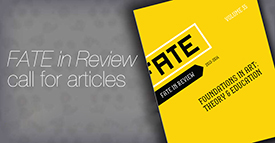 Episodes 10, 11, and 12 of “Positive Space,” FATE’s monthly podcast are now available. FATE Educator Award Winner, M. Michelle Illuminato, and FATE Shout Out Award Winner, Ralph Pugay, discuss rebuilding foundations at Portland State University, community engagement, creating welcoming learning environments and how to encourage students to be present in the creative process. FATE Educator Award Winner, Rae Goodwin discusses “Failing Forward” in her own work and how that influences her teaching and interactions with students, and FATE Leadership Award Winner, Scott Betz, discusses mentorship, creativity, and how teaching informs his ability to lead people both inside and outside the classroom. More info on the Positive Space webpage, and you can listen on iTunes.
Episodes 10, 11, and 12 of “Positive Space,” FATE’s monthly podcast are now available. FATE Educator Award Winner, M. Michelle Illuminato, and FATE Shout Out Award Winner, Ralph Pugay, discuss rebuilding foundations at Portland State University, community engagement, creating welcoming learning environments and how to encourage students to be present in the creative process. FATE Educator Award Winner, Rae Goodwin discusses “Failing Forward” in her own work and how that influences her teaching and interactions with students, and FATE Leadership Award Winner, Scott Betz, discusses mentorship, creativity, and how teaching informs his ability to lead people both inside and outside the classroom. More info on the Positive Space webpage, and you can listen on iTunes.
In addition, FATE in Review seeks thoughtful articles relating to all areas of foundations education, including expanding the practicum, flexing the core, and re-visioning visual culture. Conference papers and/or presentations, as well as papers written solely for publication, may be submitted throughout the year. We are also interested in reviews of newer books that inform foundations discussion and curriculum. Contact FATE in Review Editor, Michael Marks.
Upcoming for CAA 2018: FATE’s CAA affiliate representative, Naomi J. Falk, is looking for panelists for FATE’s affiliate conference session, entitled, “Let’s Dance, But Don’t Call Me Baby: Dialogue, Empathy, and Inclusion in the Classroom and Beyond.” Feeling welcome, acknowledged, and heard encourages learning. Fostering inclusiveness and empathy on behalf of minority students legitimizes perspectives. How do we build trust and empathy between faculty, students, peers, and others in our classrooms and communities? How do we create a welcoming and inclusive environment? What has worked? What has gone terribly wrong? Where do we go from here? Examples of readings, projects, tools, and exercises for building inclusive, encouraging, and productive dialogues are all of interest. Please contact: Naomi J. Falk.
Japan Art History Forum (JAHF)
The Japan Art History Forum is pleased to announce that it will hold its first competition to award the JAHF First Book Subvention Prize this year. This prize will be awarded once a year to a book project that will make a substantial contribution to the field of Japanese art history, broadly defined. The award is for a maximum of $2,000, provided from membership dues and donations to the Japan Art History Forum. The deadline for submission is September 15, 2017. Visit our website for more information.
National Council of Arts Administrators (NCAA)
The forty-fifth National Council of Arts Administrators (NCAA) annual gathering, “Ground | Work: Producing Access and Equity in the Arts,” convenes September 20–23, 2017, hosted by the University of Arizona School of Art in Tucson. The lineup of speakers promises to be dynamic and engaging and includes the artist Wafaa Bilal and keynote speaker Alfredo Jaar. We have a wide range of presentations and activities arranged around this year’s conference theme: “Ground | Work: Producing Access and Equity in the Arts.” We invite current and aspiring art-department chairs, directors, and deans to attend. Visit the website to learn more about the conference, member benefits, and to join NCAA.
Public Art Dialogue (PAD)
Public Art Dialogue welcomes five new board members: Annie Dell’Aria, Leslie Markle, and Andrew Wasserman, are PAD’s new program committee. Laura Holzman joins PAD’s social media team, and Ciara McKeown joins the PAD board as member at large. We’d like to thank our former program committee members, Norie Sato and Renee Piechocki for doing such a terrific job.
In other PAD news, co-chairs Cameron Cartiere and Jennifer Wingate have succeeded Cher Knight and Harriet Senie as co-editors of the journal Public Art Dialogue, and Erica Doss has taken over the position of book editor from Patricia Phillips. The fall 2017 issue will be the new editors’ first. All at PAD are grateful for Cher Knight and Harriet Senie’s stewardship as founding co-chairs of the organizations and as founding editors of the journal, and we also thank Patricia Phillips for her contributions as PAD’s book editor.
Please see CAA’s Annual Conference call for papers for information about PAD’s session in Los Angeles, “Teachable Monuments,” chaired by Sierra Rooney and Harriet Senie. Also, see the Public Art Dialogue website for the call for articles for the Fall 2018 issue of Public Art Dialogue on the topic of “Public Art as Political Action.” The deadline is March 1, 2018.
The Feminist Art Project (TFAP)
The Feminist Art Project (TFAP) at Rutgers University is pleased to announce TFAP Add-a-Thon, a week-long initiative to expand the TFAP Calendar Archive of the contemporary feminist art movement. During July 24–30, 2017, TFAP invites the public to help in reaching the goal to add one thousand additional listings to the TFAP Calendar Archive—the only comprehensive, searchable, virtual, and physical repository of contemporary feminist art activities across varying media and from all over the world.
Participate by adding events to the online calendar during July 24–30. TFAP is looking for new listings to add from 2005 onward, such as exhibitions, films, lectures, performances, and publications, and classes, in or about all visual art media with feminist art content, feminist intent, or work by any individual woman or women of all gender expressions. So dig through your files for past, current, and future events! List your or your institution’s activities, or be a feminist archivist-activist by picking a smaller institution in your community, or a large university or museum, to focus on.
TFAP needs your catalogues, announcements, and other documentation that mirror the Calendar Archive listings that you post. They will be included in the Miriam Schapiro Archives at Special Collections and University Archives at Rutgers University Libraries, where the TFAP Archive is housed. It is vital for us to continue to contribute to this archive to ensure that the activities of women artists are included in the historical record and creating a key resource for researchers and scholars who will study the feminist art movement in the future.
The TFAP Add-a-Thon is presented in partnership with Special Collections and University Archives, Rutgers University Libraries. Visit feministartproject.rutgers.edu for more information about the TFAP Add-a-Thon and sending your archive materials.
The Art Bulletin Reviews Online Collection Catalogs
posted by CAA — Jul 13, 2017
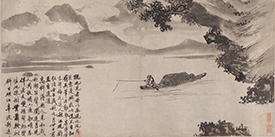
Shen Zhou, Solitary Angler on an Autumn River, 1492, handscroll, ink on paper, 13½ x 411½ in. (34.4 x 1045 cm), frontispiece: 11¾ x 33 in. (30 cm x 83.8 cm). Seattle Art Museum, Gift of Karen Wang, 97.80 (artwork in the public domain; photograph provided by the Seattle Art Museum)
In its June 2017 issue, The Art Bulletin is publishing reviews of six online collection catalogs issued by the National Gallery of Art, Washington DC; the Seattle Art Museum; the Arthur M. Sackler and Freer Gallery of Art, Washington DC; the Art Institute of Chicago; the Tate, United Kingdom; and the Walker Art Center, Minneapolis. This is the first time the quarterly journal has devoted its reviews section to digital scholarship.
Stephen H. Whiteman’s review of the Seattle Art Museum’s Chinese Painting & Calligraphy catalog is available now in an enhanced digital version, published on the Scalar platform and developed in collaboration with Nancy Um and Lauren Cesiro. The open-access project is at http://scalar.usc.edu/works/samosci/index.
News from the Art and Academic Worlds
posted by Christopher Howard — Jul 12, 2017
Each week CAA News summarizes eight articles, published around the web, that CAA members may find interesting and useful in their professional and creative lives.
Lessons from the Scaffold Controversy: “Museums Are Inherently Colonial Institutions”
It’s been just over a month since Minneapolis was hit with the Scaffold controversy. We asked several American curators to consider the controversy’s lessons for the larger museum world. Their responses set a new tone for how cultural institutions can work with local indigenous communities. (Read more from the Minneapolis Star Tribune.)
Falling in Love with a Felix Gonzalez-Torres Go-Go Dancer
It was the squeaking of the shoes that caught my attention. I knew exactly what was going on, and that the pale blue platform which I had seen empty a minute earlier was now occupied. I quietly rushed through the gallery to the small room where I saw him. Upon walking in, I froze and stared. (Read more from Hyperallergic.)
Thomas Campbell on Why He Stepped Down from the Met
I’ve moved the museum forward in many respects. We’ve modernized and come into the twenty-first century. We have an extraordinarily strong program. We’ve grown our audience by 40 percent. We’ve digitized. And we’ve done a lot of planning for the future. (Read more from the Art Newspaper.)
Most of a Mexican Museum Collection Fails Authentication
Almost all artifacts described as the oldest in the permanent collection of the Mexican Museum are either forgeries or cannot be authenticated to display in a national museum. That’s the finding of a report commissioned by the museum board and submitted in late June by Eduardo Pérez de Heredia Puente, an associate of the National Institute of Anthropology and History in Mexico City. (Read more from the San Francisco Gate.)
The Women Who Built the New York Art World
Over the course of ten years, between 1929 and 1939, four of New York City’s most iconic museums emerged: the Museum of Modern Art, the Whitney, the Frick Collection, and the Solomon R. Guggenheim Museum. These institutions are now world famous. But their founders—predominantly women—are relatively unknown. (Read more from Artsy.)
How to Chair a University Department and Not Be Terrible at It
This summer, I am completing a five-year stint as chair of my department. I know a lot more about chairing than I did when I took on the position, so I thought this might be a good time to share some lessons for those now taking on similar positions in their institutions or considering doing so in the future. (Read more from Pacific Standard.)
The Rise of the Thought Leader
The rich have empowered a new kind of thinker—the “thought leader”—at the expense of the much-fretted-over “public intellectual.” Whereas public intellectuals like Noam Chomsky or Martha Nussbaum are skeptical and analytical, thought leaders like Thomas Friedman and Sheryl Sandberg “develop their own singular lens to explain the world, and then proselytize that worldview to anyone within earshot.” (Read more from the New Republic.)
How to Build Your Own Career Fair
Career fairs pose special challenges for doctoral students and postdocs. Some people I advise describe feeling discouraged that the organizations they encounter at local career fairs are misaligned with their specific career interests. One reason is that the diversity of PhD programs in many institutions makes it impractical to bring together employers who appeal to a large portion of attendees. (Read more from Inside Higher Ed.)
Fair Use Events in France: A Recap
posted by michaelh — Jul 11, 2017
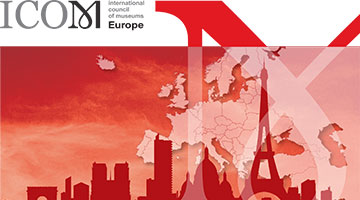 On June 4 and 6, CAA, represented by Hunter O’Hanian, participated in three events in France about CAA’s Code of Best Practices in Fair Use for the Visual Arts. The first took place on June 4 in Fontainebleau, when O’Hanian spoke at a session on “Fair Use and Open Content,” at the seventh annual Festival of Art History, held during the annual Fontainebleau Festival. Organized by Martine Denoyelle of France’s Institut National d’Histoire de l’Art (INHA), other speakers included Hana Leaper from the Paul Mellon Center for Studies in British Art (UK) and Mikka Gee Conway from the J. Paul Getty Trust. Approximately seventy-five people attended the session, which concluded with a lively discussion about copyright issues in France, the UK, and USA. To share the content of the Code of Best Practices as widely as possible, CAA produced a version in French translation that was available throughout the three day festival.
On June 4 and 6, CAA, represented by Hunter O’Hanian, participated in three events in France about CAA’s Code of Best Practices in Fair Use for the Visual Arts. The first took place on June 4 in Fontainebleau, when O’Hanian spoke at a session on “Fair Use and Open Content,” at the seventh annual Festival of Art History, held during the annual Fontainebleau Festival. Organized by Martine Denoyelle of France’s Institut National d’Histoire de l’Art (INHA), other speakers included Hana Leaper from the Paul Mellon Center for Studies in British Art (UK) and Mikka Gee Conway from the J. Paul Getty Trust. Approximately seventy-five people attended the session, which concluded with a lively discussion about copyright issues in France, the UK, and USA. To share the content of the Code of Best Practices as widely as possible, CAA produced a version in French translation that was available throughout the three day festival.
Read the Code of Best Practices in French
On June 6, O’Hanian was part of a panel about fair use during the annual conference of ICOM Europe, held at the Musée des Arts et Metiers in Paris. Titled “Copyright Flexibilities in the US and EU: How Fair Use and Other Flexibilities are Helping Museums to Fulfill their Mission,” the session also included Peter Jaszi, professor of law at the Washington College of Law, American University, and a principal lead investigator for CAA’s fair use initiative. The event was introduced Luis Raposo, president of ICOM-Europe, and included Ronan Deazley, Queens University, Belfast, Northern Ireland; Paul Klimpel, iRights Lab Culture, and ICOM Germany member; Claire La Henaff, Musée National Picasso (Paris), and ICOM France member; and Charlotte Waelde, Centre for Dance Research, Coventry University. Approximately one hundred museum professionals from countries throughout Europe attended the event.
Earlier the same day, CAA convened a small planning meeting to explore next steps in sharing the Code of Best Practices with decision makers in the EU interested in increasing copyright flexibilities. The Terra Foundation generously made their Paris offices available for the meeting, which included, in addition to O’Hanian and Jaszi, Francesca Rose from the Terra Foundation; Anne Goodyear, codirector of the Bowdoin College Museum of Art and chair of CAA’s Committee on Intellectual Property; Martine Denoyelle, Chief Curator of Heritage, Institut National d’Histoire de l’Art; Ronan Deazley, School of Law, Queens University, Belfast, N. Ireland; and Stef van Gompel, Faculty of Law, University of Amsterdam. The discussion focused on ways in which European countries were increasing access to information and images, including open access and fair dealing (in the UK), and the usefulness of gathering data about current EU practices in the use of copyrighted materials. The group plans to reconvene during the CAA annual conference in Los Angeles in 2018.
CAA’s participation in these events was underwritten by a generous grant from the Samuel H. Kress Foundation.
New in caa.reviews
posted by CAA — Jul 07, 2017
Cindy Lisica visits We Chat: A Dialogue in Contemporary Chinese Art at the Asia Society Texas Center. The exhibition features artists “who were of single-digit age during the 1989 Tiananmen Square protest-turned-massacre” and are “self-reflective and uninhibited by conventional social constructions of the past.” It is “a layered, nuanced, and exhilarating presentation of contemporary currents in Chinese art.” Read the full review at caa.reviews.
Alpesh Kantilal Patel reviews Nari Ward: Sun Splashed and Firelei Báez: Bloodlines, both at the Pérez Art Museum Miami. The “first mid-career retrospective of the Jamaican-born” Ward and his “diverse oeuvre” “overlapped with “a smaller solo exhibition of primarily paintings and drawings by the Dominican Republic-born Báez, a former student of Wards,” presenting “a carefully constructed curatorial conceit.” Read the full review at caa.reviews.
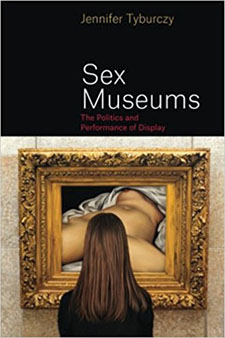 Sampada Aranke reads Sex Museums: The Politics and Performance of Display by Jennifer Tyburczy. In this “dynamic and compelling study,” the author “provocatively weaves together a mode of research and writing that thickens the role of sex in the museum . . . cracking[ing] open an unwieldy composition of narratives, critical approaches, and sensual objects to rethinking the pleasure and politics of display.” Read the full review at caa.reviews.
Sampada Aranke reads Sex Museums: The Politics and Performance of Display by Jennifer Tyburczy. In this “dynamic and compelling study,” the author “provocatively weaves together a mode of research and writing that thickens the role of sex in the museum . . . cracking[ing] open an unwieldy composition of narratives, critical approaches, and sensual objects to rethinking the pleasure and politics of display.” Read the full review at caa.reviews.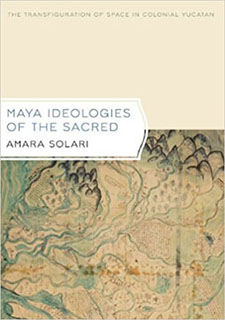 Ana Pulido-Rull discusses Amara Solari’s Maya Ideologies of the Sacred: The Transfiguration of Space in Colonial Yucatan. The author “examines the city of Itzmal” to “illustrate how this project was heavily influenced, even challenged, by deep-rooted Maya traditions and conceptions of space,” providing “a nuanced understanding” of these ideas “and their role in shaping early colonial indigenous identity.” Read the full review at caa.reviews.
Ana Pulido-Rull discusses Amara Solari’s Maya Ideologies of the Sacred: The Transfiguration of Space in Colonial Yucatan. The author “examines the city of Itzmal” to “illustrate how this project was heavily influenced, even challenged, by deep-rooted Maya traditions and conceptions of space,” providing “a nuanced understanding” of these ideas “and their role in shaping early colonial indigenous identity.” Read the full review at caa.reviews.News from the Art and Academic Worlds
posted by Christopher Howard — Jun 28, 2017
Each week CAA News summarizes eight articles, published around the web, that CAA members may find interesting and useful in their professional and creative lives.
Eighteen Artists Share the Books That Inspire Them
Some artists wear their literary loves on their sleeves. More often than not, though, we have no idea what artists are reading, no idea what books have shaped their life and work. So we asked eighteen of our favorites to help compile an eclectic, artsy summer-reading list. (Read more from Artsy.)
Why Didn’t Great Painters of the Past Reach the Level of Realism Achieved Today?
They did. I’d argue to the death that they exceeded it. Forgive me if I come off as pedantic, but this exact question hits me passionately. The biggest misconception among nonartists and amateurs is that more detail equals more realism in art. (Read more from Quora.)
Should Robot Artists Be Given Copyright Protection?
When a group of museums and researchers in the Netherlands unveiled a portrait entitled The Next Rembrandt, it wasn’t a long-lost painting but a new computer-generated artwork that had analyzed thousands of works by the famous seventeenth-century Dutch artist. The result is a portrait based on the styles and motifs found in Rembrandt’s art but produced by algorithms. (Read more from Phys.org.)
Old Criticisms, New Threats
Professors have long been political targets. But a spate of recent threats against scholars—including two that have led to campus closures—is raising fresh concerns about safety and academic freedom. (Read more from Inside Higher Ed.)
Protect Scholars against Attacks from the Right
Threats to scholars are growing. John Eric Williams of Trinity College and Dana Cloud from Syracuse University are among the latest professors to face “physical threats or harassment, or both, for their political speech.” Yet at a time of declining funding for higher education, administrators often become less courageous and more beholden to deep-pocketed donors. (Read more from Inside Higher Ed.)
City of Atlanta Settles Lawsuit with Street Artists
The city of Atlanta has agreed not to enforce an ordinance that requires street artists to obtain a series of approvals to retain murals that already exist or to paint new ones. The decision resolves a lawsuit filed by a group of local artists and property owners, and the settlement was part of a consent order signed last week by US District Judge Amy Totenberg. (Read more from the Atlanta Journal-Constitution.)
What Did You See in That Painting?
In a small-scale study, a research team led by Francesco Walker of Vrije University has presented evidence that children and adults look at works of art quite differently, with kids focusing first on visually stimulating elements. Adults, in contrast, try to make sense of the thing from the get-go. (Read more from Pacific Standard.)
The World’s Art Is under Attack—by Microbes
We’re used to seeing famous works of art and historical artifacts marred by the elements. They can be eroded by wind and water, faded by sunlight, or nibbled by insects. But cultural relics can also be damaged by hordes of even tinier invaders: bacteria, fungi, and algae. (Read more from Popular Science.)
News from the Art and Academic Worlds
posted by Christopher Howard — Jun 21, 2017
Each week CAA News summarizes eight articles, published around the web, that CAA members may find interesting and useful in their professional and creative lives.
Artist Sam Durant Was Pressured into Taking Down His Scaffold. Why Doesn’t He Feel Censored?
Sam Durant’s sculpture Scaffold had been exhibited in Europe three times, but upon landing in Minneapolis for the reopening of the Walker Art Center’s Sculpture Garden, it sparked a media firestorm. Native American activists said it trivialized one of the ghastliest episodes in Dakota indigenous history. (Read more from the Los Angeles Times.)
NCAC Statement Criticizing Decision to Destroy Controversial Sculpture
As a coalition of national and international organizations devoted to promoting creative freedom, we strongly oppose the Walker Art Center’s decision to dismantle and destroy a controversial public sculpture. Scaffold, a 2012 work by Sam Durant, was intended to comment on capital punishment and its disproportionate effect on people of color. (Read more from the National Coalition against Censorship.)
Classicist Receives Death Threats from Alt-Right over Art-Historical Essay
Sarah E. Bond, a historian of Rome and an assistant professor in the Classics Department at the University of Iowa, has received death threats and is being targeted by the alt-right for publishing an article on polychromy in the ancient world. “They viewed the piece as ‘liberal professor says that all white statues are racist,’” Bond said. “And that is clearly not what the piece is about.” (Read more from Artforum.)
Threats for What She Didn’t Say
Scholars vary in how and to what extent they engage with the public. Sarah Bond from the University of Iowa works at the high end of the engagement spectrum, via a blog, social media, and a column in Forbes. She’s described her efforts as a way of making antiquities accessible to all, but recent threats she’s received demonstrate the potential perils of that outreach. (Read more from Inside Higher Ed.)
As the 1 Percent Washes Their Money through Arts Funding, Artists Respond
At the 2017 Whitney Biennial, visitors were greeted by a not usually seen in museums: “The two greatest stores of wealth internationally today [are] contemporary art [… and] apartments in Manhattan.” The words, from Larry Fink, a member of President Trump’s Strategic and Policy Forum and the CEO of BlackRock, were written over a craggy graph carved into the wall that tracked the rising value of the debt levels owned by the firm. (Read more from Salon.)
How Artists, Scientists, and Entrepreneurs Get Their Creative Juices Flowing
It takes imagination to be creative, and it takes creativity to innovate. Pentagram’s legendary graphic designer Paula Scher gets her best ideas when she is in boring situations: “I realize that when I’m sitting in a taxicab in traffic, or on my way to the airport, or waiting to get on a plane, or trapped in some other boring situation, that’s when I get the best ideas, because I’ve got nothing else interfering with it….” (Read more from Inc.)
The Ten Essays That Changed Art Criticism Forever
There has never been a time when art critics held more power than during the second half of the twentieth century. As part of the larger midcentury “culture wars,” art critics began to take on greater influence than before. For a time, two writers in particular—who began as friends and remained in the same social circles for much of their lives—set the stakes of the debates surrounding the maturation of American art that would continue for decades. (Read more from Artspace Magazine.)
How A $165 Million Painting Is Funding Criminal Justice Reform
Agnes Gund recently sold a $165 million painting to benefit social justice and is challenging others in the art world to follow suit. Proceeds from the sale of Roy Lichtenstein’s 1962 Masterpiece, which once hung over her mantel, will go toward the new Art for Justice Fund, an initiative designed to support criminal justice reform at state and local levels throughout the country, primarily through the sale of art. (Read more from the Huffington Post.)
Institutional News
posted by CAA — Jun 14, 2017
Read about the latest news from CAA’s institutional members.
Institutional News is published every two months: in February, April, June, August, October, and December. To learn more about submitting a listing, please follow the instructions on the main Member News page.
June 2017
The Harvard Art Museums in Cambridge, Massachusetts, have been awarded a $250,000 grant from the Terra Foundation for American Art to support the upcoming special exhibition The Philosophy Chamber: Art and Science in Harvard’s Teaching Cabinet, 1766–1820.
The National Gallery of Art in Washington, DC, has accepted a $1 million gift from the Edmond J. Safra Foundation to support the Edmond J. Safra Visiting Professorship at the Center for Advanced Study in the Visual Arts. Matching funds will permit the professorship to be fully endowed.
The Newark Museum in Newark, New Jersey, has received a $750,000 grant from the Henry Luce Foundation to expand and reinterpret its permanent galleries of American art and to document the collections through two new publications.
News from the Art and Academic Worlds
posted by Christopher Howard — Jun 14, 2017
Each week CAA News summarizes eight articles, published around the web, that CAA members may find interesting and useful in their professional and creative lives.
Cultural Appropriation: A Roundtable
In a roundtable, the artists Salome Asega, Ajay Kurian, and Jacolby Satterwhite; scholars Homi K. Bhabha and Joan Kee; Artforum editor Michelle Kuo; and writer, artist, and activist Gregg Bordowitz examine the urgent and omnipresent politics of representation, appropriation, and power. (Read more from Artforum.)
Andrea Fraser Tracks Down Museum Trustees’ Political Donations
The artist Andrea Fraser is mapping the connections between major American museums and the political elite to expose institutions’ ties to the White House. Using publicly available information, she is documenting all political donations made in 2016 by museum patrons and trustees, many of whom contributed to Donald Trump’s election campaign. (Read more from the Art Newspaper.)
Anti-Intellectualism and the “Dumbing Down” of America
There is a growing and disturbing trend of anti-intellectual elitism in American culture. It’s the dismissal of science, the arts, and humanities and their replacement by entertainment, self-righteousness, ignorance, and deliberate gullibility. (Read more from Signs of the Times.)
If Google Teaches an AI to Draw, Will That Help It Think?
The point of SketchRNN is not only to learn how to draw pictures, but to “generalize abstract concepts in a manner similar to humans.” They don’t want to create a machine that can sketch pigs. They want to create a machine that can recognize and output “pigness.” (Read more from the Atlantic.)
The Unseen Labor of Mentoring
It’s extremely flattering that students recommend me to peers who need extra support. However, it can also be frustrating to continuously manage unscheduled drop-ins when I’m trying to grade papers, prep for class, respond to emails, write letters of recommendations, and prepare for meetings. (Read more from Vitae.)
Law and Order
Plagiarism, cheating, tampering, and submitting false records all threaten the integrity of your class and diminish other students’ honest work and effort. Given that misconduct is both disturbingly pervasive and potentially ruinous, how should teaching assistants proceed if they are concerned a student may be running afoul of the rules? (Read more from GradHacker.)
Drinking and Conferencing
At the International Congress on Medieval Studies, as at most academic gatherings, socializing typically unfolds in the presence of alcohol: at the daily wine hour, at large dinners with plentiful cocktails, at champagne celebrations of prizes awarded or careers coming to a close, at casual meetings with friends anytime between sessions when we can gather for a drink. (Read more from the Chronicle of Higher Education.)
How Are Funders Boosting Engagement across Diverse Communities?
We occasionally stumble across a news item that compels us to step back and take stock of the larger arts philanthropy landscape. Such is the case with news from New York City, where an impressive cadre of funders joined forces earlier this spring to engage diverse audiences. (Read more from Inside Philanthropy.)
People in the News
posted by CAA — Jun 12, 2017
People in the News lists new hires, positions, and promotions in three sections: Academe, Museums and Galleries, and Organizations and Publications.
The section is published every two months: in February, April, June, August, October, and December. To learn more about submitting a listing, please follow the instructions on the main Member News page.
June 2017
Academe
Christine Poggi, formerly professor of art history at the University of Pennsylvania in Philadelphia, has been named Judy and Michael Steinhardt Director of the Institute of Fine Arts at New York University.
Charles Wright, professor and chair of art at Western Illinois University in Macomb, has become dean of academic affairs at Ferris State University’s Kendall College of Art and Design in Grand Rapids, Michigan.
Museums and Galleries
Wassan Al-Khudhairi, presently curator of modern and contemporary art at the Birmingham Museum of Art in Alabama, has become chief curator of the Contemporary Art Museum Saint Louis in Missouri.
Brooke Davis Anderson has been named Edna S. Tuttleman Director of the museum at the Pennsylvania Academy of the Fine Arts in Philadelphia.
Virginia Brilliant, formerly Ulla R. Searing Curator of Collections at the John and Mable Ringling Museum of Art in Sarasota, Florida, has been appointed curator-in-charge of European paintings at the Fine Arts Museums of San Francisco in California.
Emma Imbrie Chubb, a doctoral student and presidential fellow in the Department of Art History at Northwestern University in Evanston, Illinois, has been named the inaugural Charlotte Feng Ford ’83 Curator of Contemporary Art at the Smith College Museum of Art in Northampton, Massachusetts.
Sarah Guernsey, formerly vice president for publishing and design at the Art Institute of Chicago in Illinois, has been appointed deputy director for curatorial affairs at the museum.
Anna Katz, curatorial fellow at the Museum of Contemporary Art, Los Angeles, in California since 2015, has joined the museum as assistant curator.
Christine Sciacca has become associate curator of European art, 300–1400 CE, at the Walters Art Museum in Baltimore, Maryland. She was previously assistant curator in the Manuscripts Department at the J. Paul Getty Museum in Los Angeles, California.
Organizations and Publications
Yolanda Sánchez has retired from her position in the Fine Arts and Cultural Affairs Division of the Miami-Dade Aviation Department and the art program at Miami International Airport in Florida.
Roger Thorp has left Tate Publishing in London, England, for the position of editorial director at Thames and Hudson, also in London.




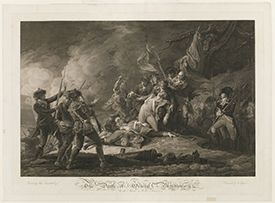 Johan Frederik Clemens, Death of General Montgomery, 1798, engraving on cream antique laid paper, 25½ x 34½ in. (artwork in the public domain)
Johan Frederik Clemens, Death of General Montgomery, 1798, engraving on cream antique laid paper, 25½ x 34½ in. (artwork in the public domain)

 Christine Poggi
Christine Poggi
 Emma Imbrie Chubb
Emma Imbrie Chubb
 Sarah Guernsey
Sarah Guernsey
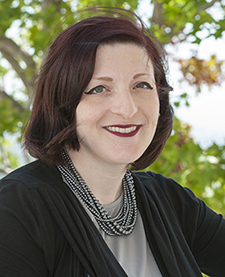 Christine Sciacca
Christine Sciacca